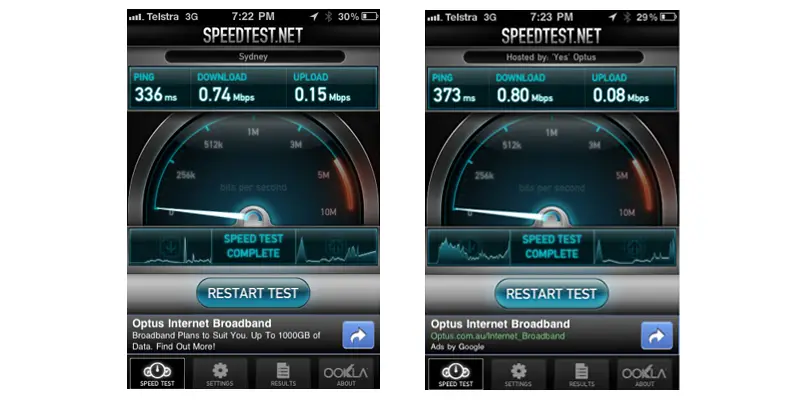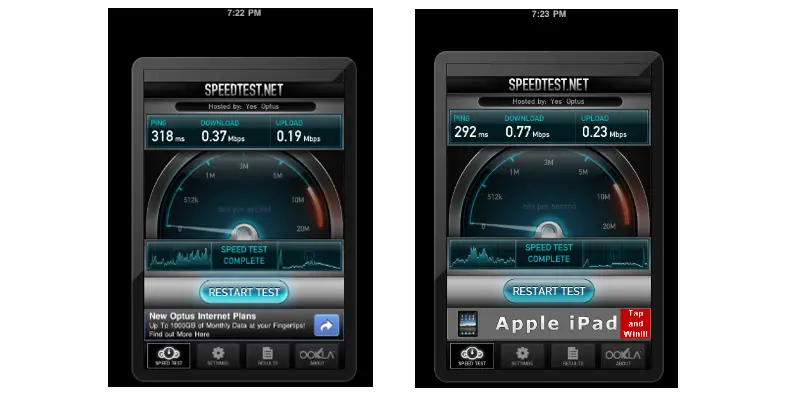A tablet as a main internet source, does it work?
 Being a university student/self-confessed gadget geek, there are a few things that I need: gadgets and devices that work, as well as a high speed internet connection. Without these, many students and people all over the world would struggle to continue their daily technologically based lives. Most people reading this, would be in a similar situation. Recently I had an issue that caused me to use my tablet as my main Internet connection. It was not something I planned but more or less it happened due to circumstances changing. So, in this evolving world how well does this now mainstream (but rapidly evolving) technology face up to becoming the sole Internet connection for someone?
Being a university student/self-confessed gadget geek, there are a few things that I need: gadgets and devices that work, as well as a high speed internet connection. Without these, many students and people all over the world would struggle to continue their daily technologically based lives. Most people reading this, would be in a similar situation. Recently I had an issue that caused me to use my tablet as my main Internet connection. It was not something I planned but more or less it happened due to circumstances changing. So, in this evolving world how well does this now mainstream (but rapidly evolving) technology face up to becoming the sole Internet connection for someone?
Like many people, my mobile phone (iPhone 3Gs) is an extra mobile Internet connection, but is hardly used. Before I got my tablet (iPad 3G) my mobile phone was what I did all my Internet stuff on while out and about (banking, facebooking etc). But it was never a replacement to a proper internet connection. Even now that tethering is available on an nonjailbroken iPhone, it still cannot replace a home internet connection (due to the high Internet costs), not to mention that you would have to cart a laptop around everywhere.
When I bought the 3G version of the iPad as well as a pre-paid sim card, I never expected to rely on my tablet’s 3G connection. I preferred to just use my wi-fi that was already available, both at my parents’ house and also at home at uni. If I required 3G data I purchased a small package there and then.
But things changed at the start of this semester when I returned to my home for uni. After the contract was up, my housemate who was in-charge of our ADSL2+ plan cancelled it without telling me… I was obviously very mad. I started ringing up internet providers for prices on the cheapest plans and was disgusted to learn I would have to pay a several hundred dollar connection fee, which wasn’t going to happen. At the time I never knew that my 3G tablet would very quickly become my main Internet connection source.
With my mobile phone contract, I also have a 2 year contract with Telstra (main telco company in Australia) for a wireless mobile modem/router (Bigpond Gateway) which was on the lowest tier of pricing. I got this when I finished school as a “back-up” internet connection. After a little bit of snooping around on Telstra’s website I actually figured it worked out to give me MORE data on my pre-paid tablet (through the same company) than if I increased my plan of the mobile router on a contract.
So, an experiment that I did not know was happening, began. For the next several months my tablet was used for email, banking, facebooking, NBTing and the like. I used my modem/router for programs that required a connection as well as facebook chat, skype and IRC (as the lowest tier plan included only 400mb of data). This allowed me to download everything for uni and print it too. When I wanted to download GBs of stuff, I just took my laptop to uni, connected to the wireless and let the downloads happen.
So, my setup worked.
Yet as 3 months have passed, my opinion of my set-up “working” has now changed. It was “temporary”. That was the only way to describe it, and I eventually got sick of my tablets Internet. The touchscreen, which was nice to use occasionally became annoying, clumsy. What was usually a quick experience, eg opening a large amount of tabs on a browser (Chrome) on a machine running Windows 7, became an excruciatingly painful and long process on the tablet.
A lot of websites are now beginning to get mobile websites for the ever growing smartphone population. Andreas has expressed his feelings about mobile sites, and for the most part I agree. The iPad came across a few websites that shot back to the mobile version. This annoyed me like it did Andreas, and it was one of the reasons I craved a proper browser. Mobile sites just do not do justice for the real thing.
I may be getting a little more iOS specific now, but several issues surrounding YouTube would annoy me the most. When the iPad (or any other iOS device) tries to play a YouTube video, the quality it will play the video depends on the connection type. If it is from a wi-fi connection, it will play in a high quality while if it’s using 3G it will be low quality. I can understand why this is, but I would prefer an option to play either high or low quality, since I have already paid for my data. I believe I should use the data how I want. If I want to blow that data on some HD videos, I should be able to blow the data on some HD videos.
The iOS download limit for apps – (20MB) always causes snags. Several apps from the app store need a wi-fi network to download. Again, I understand that this is in iOS to stop people from getting bill shock, and that it is left over from Apple’s iPhone agreement with AT&T (apparently, their network sucks). But, as I have already paid for my data, I should be able to use 3G to download larger apps. I am not saying eliminate the limit, but raise it – or at least make it optional for carriers (ie carriers and/or users set the download limit of the app store).
The other major issue is speed. I am not up on the technology of mobile data and networks, but I could certainly see that the speed left a lot to be desired. I ran a few speed tests across all of my Telstra Next G services (iPad, iPhone and Telstra Bigpond Home Gateway – all mobile broadband 3G devices) and had a look at the results. I was surprised – and not in a good way. I ran these tests at exactly the same time with the devices all within 1 meter of each other and all going to the same server. I am covered by pretty good service at my house (as you can see).
My iPhone came up with the following results, followed by my laptop (connected via Ethernet to the router) with my iPad last. For my iPhone and iPad I used the speedtest app while on the laptop I just used the browser.



I was shocked at the numbers that I saw. This was during peak hours, and I began to understand the terrible results that my iPhone and iPad acheived. Yet what shocked me, was how my mobile router got half the ping of the other two, and managed to get a whopping 4.57Mbps download! Especially when the other two are running off of the same mobile network. I would have expected to get similar results off of all the devices. As I said before, I am not a telecommunications engineer, so I can’t really explain this. However, being that my mobile router is designed for this sort of stuff, I think it has got something to do with it.
So, after 3 months of this I decided to bite the bullet – I upgraded to a 7GB plan on my mobile modem/router. Instantly, my life became full of colour again – I was able to download apps that were larger then 20MB and watch videos on YouTube in half-decent quality. The speed did feel to increase which is backed up by the numbers above. I now hate the idea of using my tablet for browsing and would much rather turn on my laptop to do quick browsing than use my iPad.
So, the answer to the question “tablets as a main internet source, does it work?” is quite simply, no. No, it does not. The current cost of mobile data, coupled with the slower access speeds compared to ADSL and the fustrating experience long term iOS use, does take it’s toll. The past 3 months have turned me off portable OSes, and I cannot wait until some real OSes start hitting tablets. Even better, an increase in data speeds and decrease in the ping of mobile networks… So the future of mobile computing can come in the form of Splashtop.

